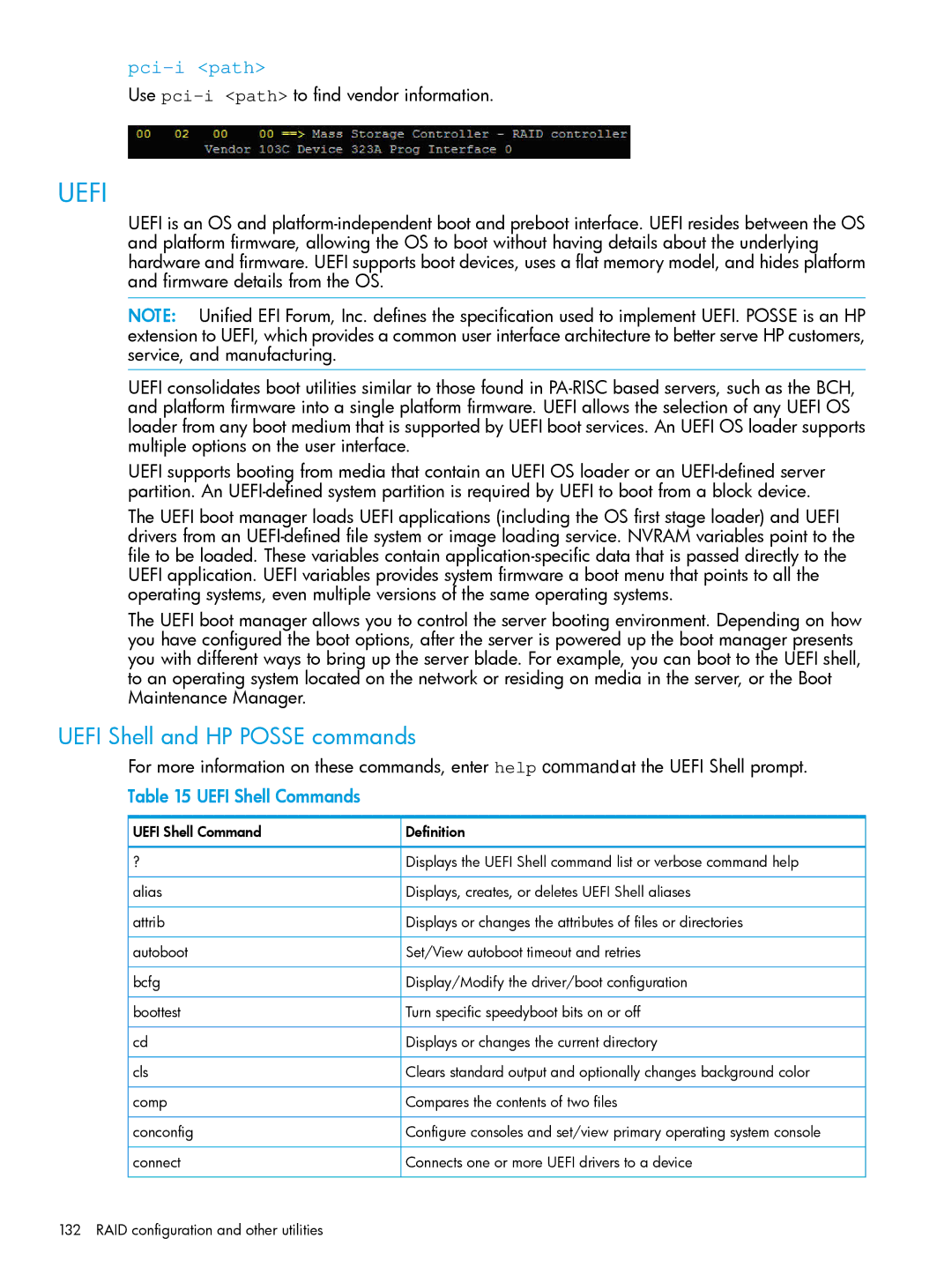
Use
UEFI
UEFI is an OS and
NOTE: Unified EFI Forum, Inc. defines the specification used to implement UEFI. POSSE is an HP extension to UEFI, which provides a common user interface architecture to better serve HP customers, service, and manufacturing.
UEFI consolidates boot utilities similar to those found in
UEFI supports booting from media that contain an UEFI OS loader or an
The UEFI boot manager loads UEFI applications (including the OS first stage loader) and UEFI drivers from an
The UEFI boot manager allows you to control the server booting environment. Depending on how you have configured the boot options, after the server is powered up the boot manager presents you with different ways to bring up the server blade. For example, you can boot to the UEFI shell, to an operating system located on the network or residing on media in the server, or the Boot Maintenance Manager.
UEFI Shell and HP POSSE commands
For more information on these commands, enter help command at the UEFI Shell prompt.
Table 15 UEFI Shell Commands
UEFI Shell Command | Definition |
? | Displays the UEFI Shell command list or verbose command help |
alias | Displays, creates, or deletes UEFI Shell aliases |
attrib | Displays or changes the attributes of files or directories |
autoboot | Set/View autoboot timeout and retries |
bcfg | Display/Modify the driver/boot configuration |
boottest | Turn specific speedyboot bits on or off |
cd | Displays or changes the current directory |
cls | Clears standard output and optionally changes background color |
comp | Compares the contents of two files |
conconfig | Configure consoles and set/view primary operating system console |
connect | Connects one or more UEFI drivers to a device |
